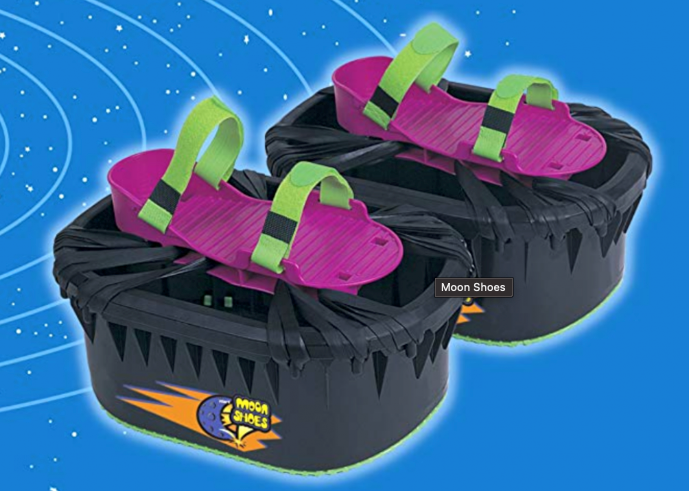For children of the 1980s, buying toys wasn’t as simple as the click of the mouse. It usually required hours of begging your parents, who then had to venture to the toy store and hope they still had it in stock.
While buying toys has undergone a tremendous transformation over the past few decades, the nostalgia 30-somethings get from seeing their favourite childhood plaything remains. Stacker used historical and retail websites to compile a list of 30 toys that were popular in the1980s.
Some of the toys that defined the time have crazy stories about them. Take, for example, shopping for a Cabbage Patch Kids doll around Christmas in 1983, which meant parents were putting their safety at risk with the many riots that ensued, which went to inspire an HBO documentary. When it came to Teddy Ruxpin, by the time the toy company Worlds of Wonder realized what it had with its new talking bear, demand had skyrocketed to the point the company was leasing jets to fill them with the plush toys and flying them stateside.
Children of the 1980s, read on to see if any of your favourites made our list of 30 toys that defined the decade.
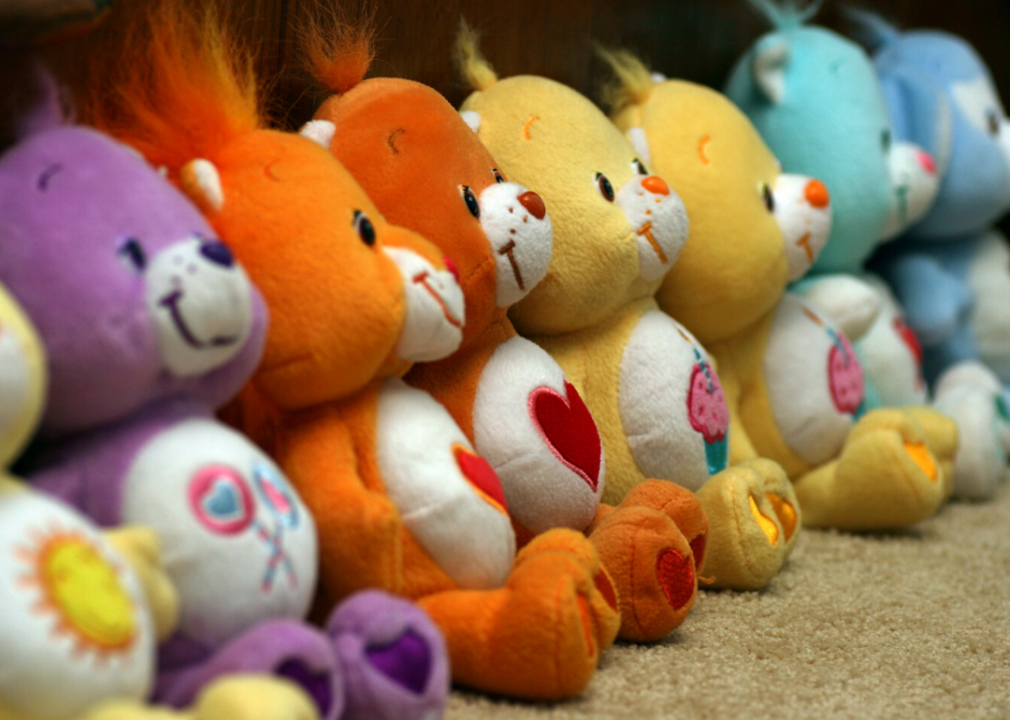
John Trainor // Flickr
Care Bears
The 10 original Care Bears, which wear belly badges to denote their personalities, were intended to be American Greetings card characters in 1981 until they became plush, stuffed Parker Brothers dolls in 1983. By 1985, Cheer Bear, Bedtime Bear, Birthday Bear, Wish Bear, Tenderheart Bear, Good Luck Bear, Love-A-Lot Bear, Friend Bear, Funshine Bear, and Grumpy Bear were all featured in an animated television series and, by the late 1980s, also starred in three major Canadian-American movies. Though relaunched a handful of times throughout the years with new names, books, and films, the soft and furry fad slowly faded by the turn of the century.

Evan-Amos // Wikimedia Commons
Atari
Coin-operated arcade amusement took a severe hit when Atari released the first home gaming console, which was created by the founders of the famous arcade game Pong. Atari 2600 came equipped with two joysticks, paddle controllers, a wood-panel printed console, and game cartridges, including “Space Invaders,” “Pac-Man,” and “Asteroids” sold separately. The gaming system, with normal and hard difficulty settings, sold millions, making the Atari brand a staple in many ’80s households.
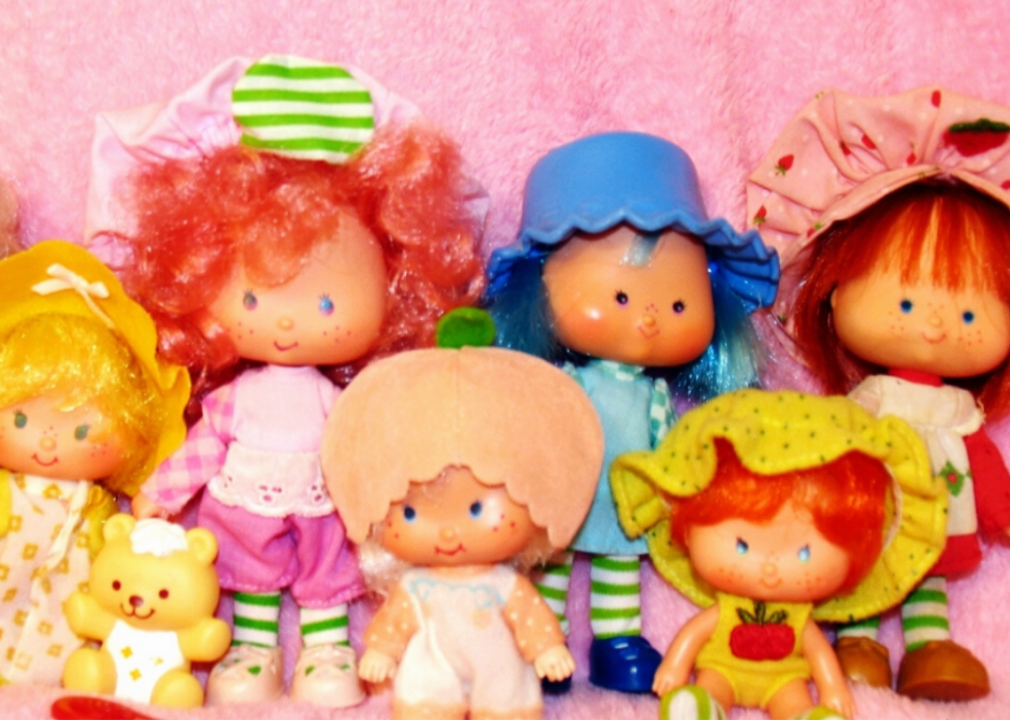
Softness // Flickr
Strawberry Shortcake
Strawberry Shortcake and her sweet-smelling, dessert-themed friends like Lemon Meringue and Blueberry Muffin were all the rage for little girls in the ’80s. An animated television series, Atari video game, and memorabilia including pajamas and bedding accompanied the craze of tiny plastic figurines, which, according to character artist Muriel Fahrion, may have made a billion dollars in franchise profits. But the freckled, frumpy hat-wearing Strawberry Shortcake was more than just a toy, with Fahrion sharing on the 40th anniversary of the doll that she’s heard playing with the character created an escape for some youth who had family struggles.
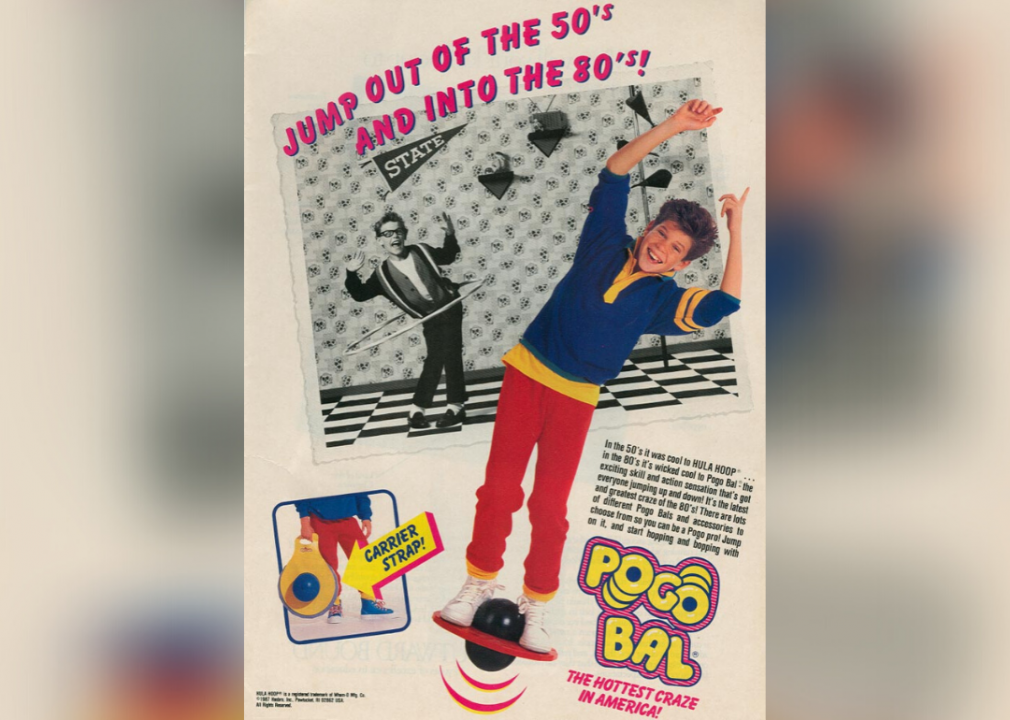
Zaphod2012 // Flickr
Pogo Ball
The Pogo Ball is a Saturn-looking jumping device manufactured by Hasbro and the cousin of the Pogo Stick, the latter of which is now an official extreme sport. Unlike gaining gravity with a steel coil and footpads, the inflatable ball placed in the center of a sturdy plastic circle helped kids catch air in the ’80s. After the fad’s popularity began to deflate, the use of the toy remained, with physical education teachers using it to teach balance to students and adults using it as an exercise ball.
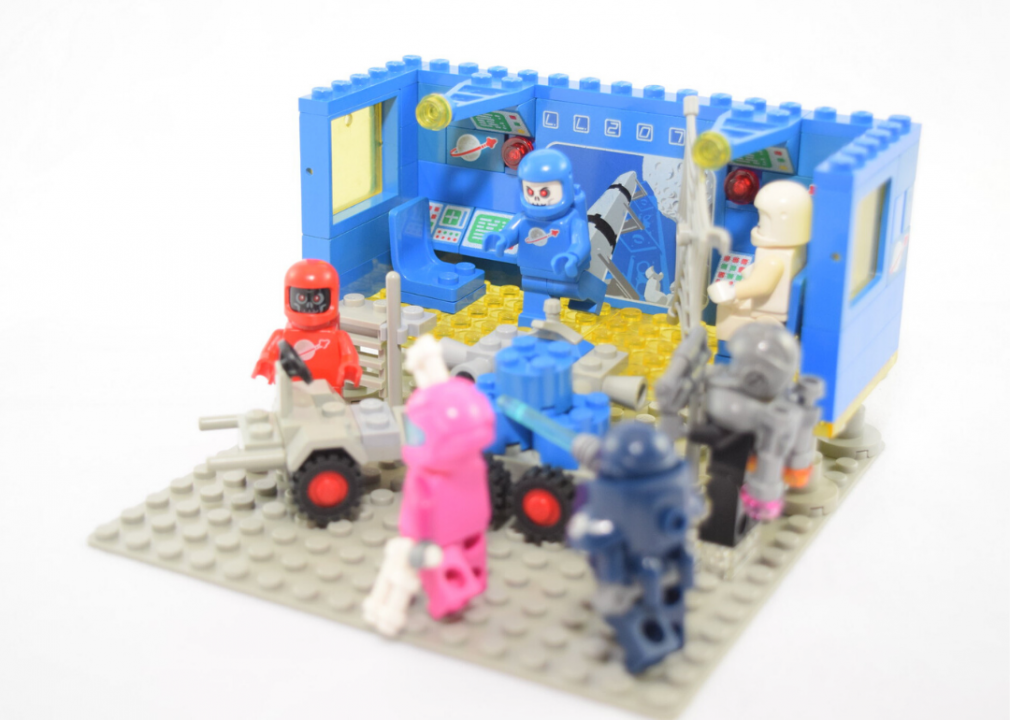
John Bearden // Flickr
Space Legos
To capitalize on the success of George Lucas’ smash-hit “Star Wars,” The Lego Group, which manufactures plastic toy bricks, created minifigures with visor-less helmets and wheeled vehicles. It wasn’t until 1999 that the toy manufacturer would issue its first intellectual property license to “Star Wars,” bringing Lego and Lucas together for real—and the toy’s cultural impact remains even. to this day.
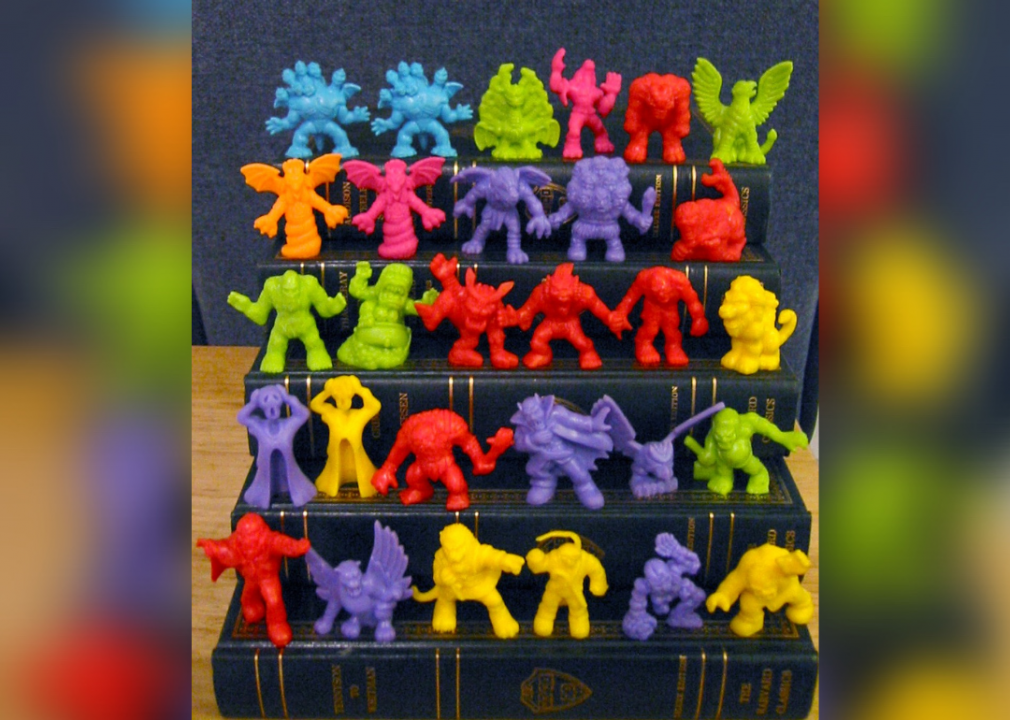
Chris Roach // Flickr
Monster in My Pocket
Matchbox’s release of Monster in My Pocket had kids in the ’80s hiding plastic figurines in their garments. Inspired by true-to-life monsters from mythology, religion, literature, and film, the brightly coloured toys first sold based on a “scary” point series, with the Great Beast worth 25, and less frightening figures like The Witch rated at 5. However, high officials from the Hindu religion requested Matchbox apologize in 1993 when the toy line depicted Indian divinity as tiny plastic monsters, which was offensive to their culture.
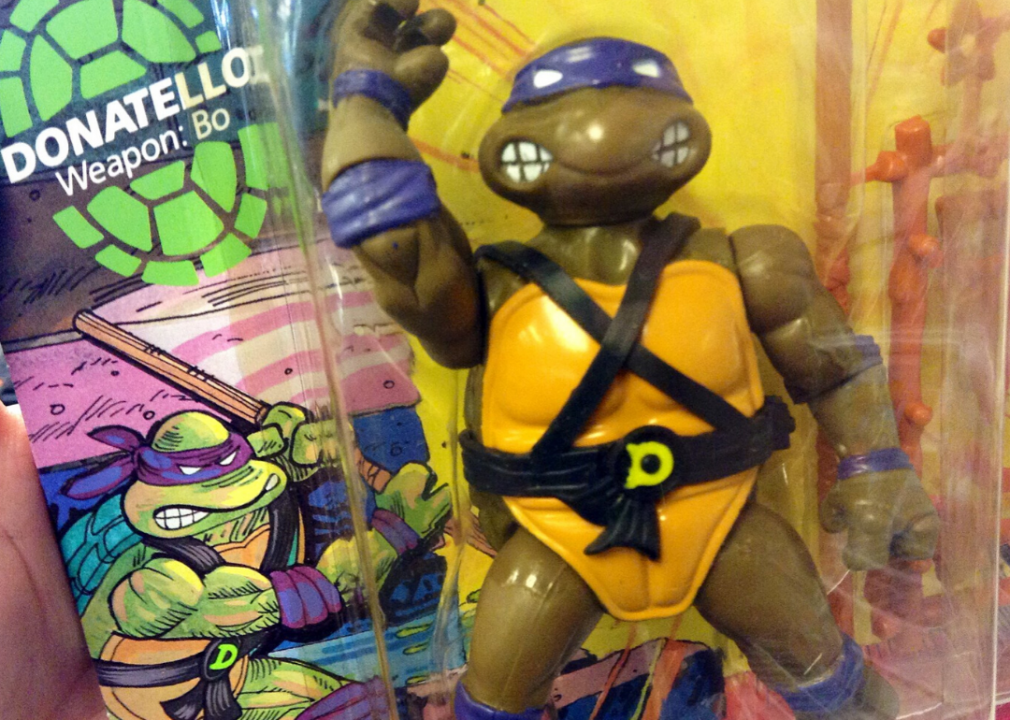
Mike Mozart // Flickr
Teenage Mutant Ninja Turtles
The Italian Renaissance-named reptilians Michelangelo, Donatello, Raphael, and Leonardo are as hot now as they were in 1983 when two artists first sketched them on a piece of paper, which sold for more than $70,000 in 2012. What began as a comic book series turned into a pop-culture craze, beginning with the 1987 Saturday morning cartoon series featuring the pizza-loving martial-arts experts that was picked up by Nickelodeon in 2012. Merchandise depicting the four evil-fighting brothers totalled more than $1.1 billion in the first four years of “Turtlemania.”
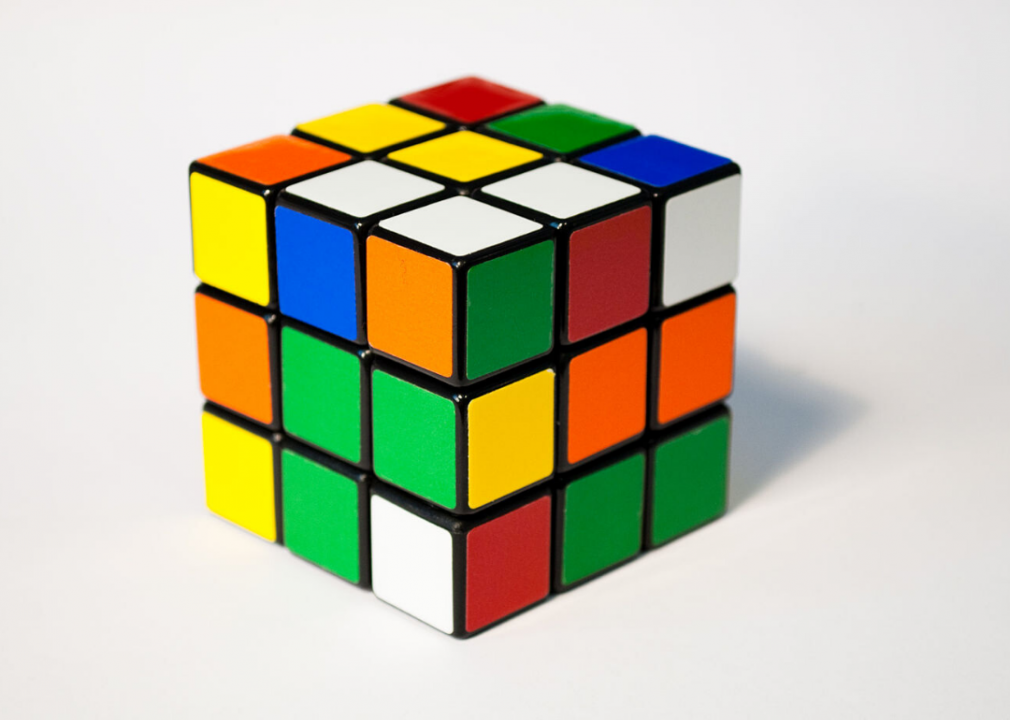
Acdx // Wikimedia Commons
Rubik’s Cube
Lining up nine squares on the six-sided, primary-coloured 3D puzzle had kids competing against themselves when the Rubik’s Cube debuted in 1980. Originally named the Magic Cube, the toy’s popularity made finishing fast a sport, with the first speedcubing Rubik’s World Championships in Budapest in 1982. After mid-’90s anniversary relaunches, including a diamond-studded cube, Rubik’s remains popular today, enjoying its most successful year in 2017, with over $250 million in sales.
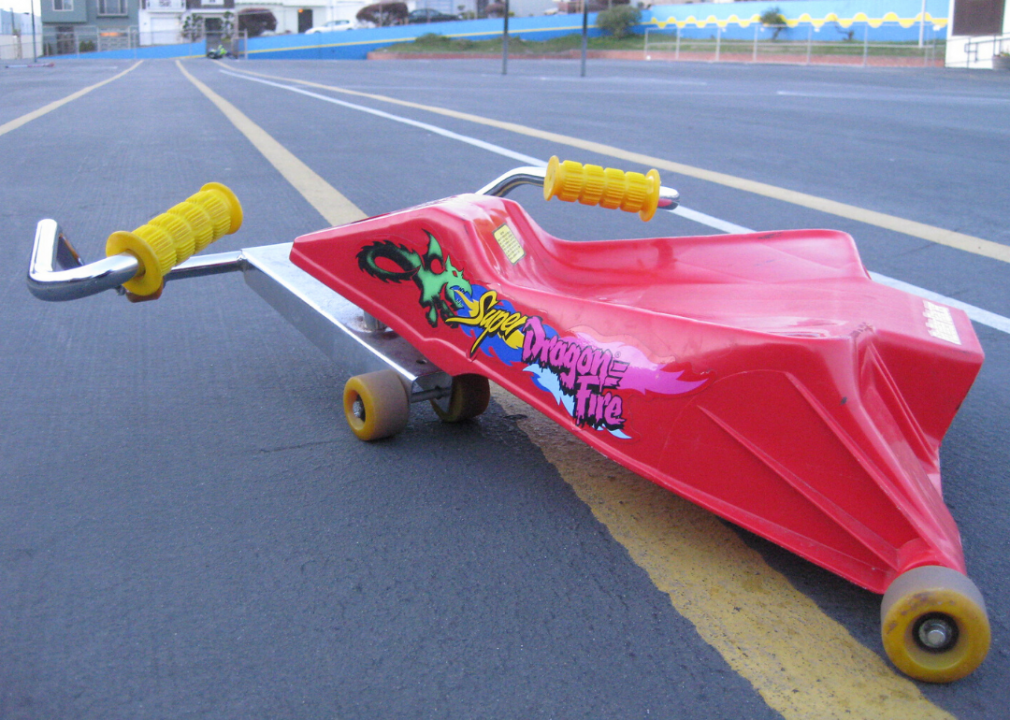
Michael Ocampo // Flickr
Roller Racer
The Roller Racer, a human-powered toy consisting of rams horn-shaped handlebars connected to wheels atop a tractor seat, had kids racing down streets and scientists studying its physics in the ’80s. The side-to-side thrust vector concept, inspired by a retired Boeing engineer as a present for his grandson, was sold by the brand Wham-O, which also produced other pop culture classics like Hacky Sack and Slip ‘N Slide. Decades later, Roller Racers remain a hit with physical education teachers, who use the toy in relay races, obstacle courses, and roller tag.
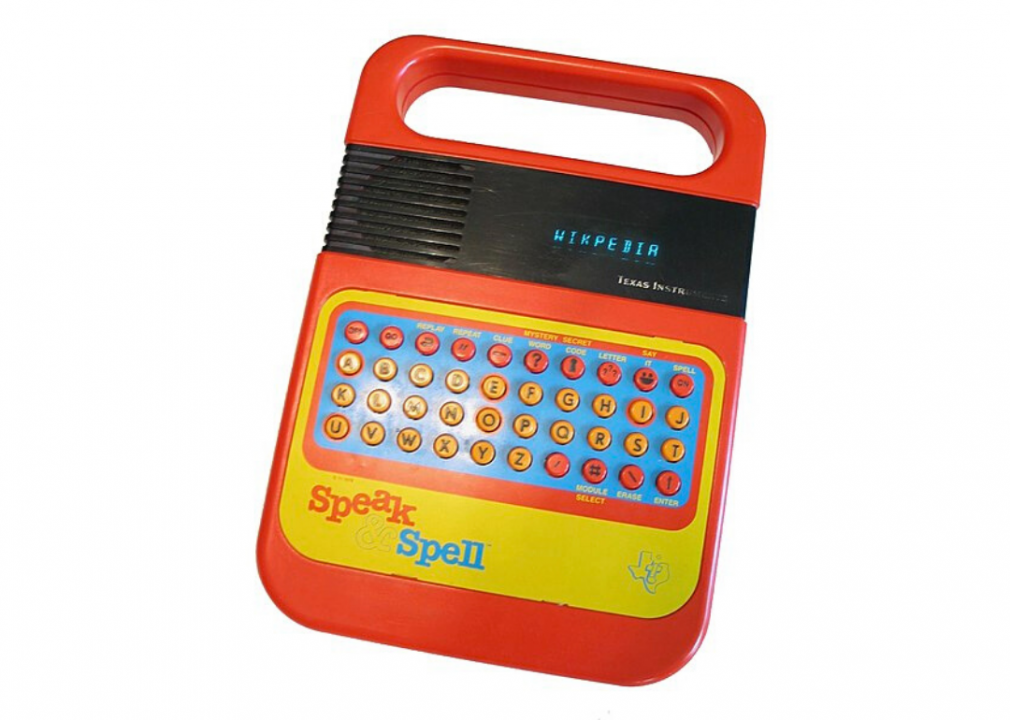
Fozz Tex // Wikimedia Commons
Speak & Spell
The handheld Texas Instrument toy came with learning cartridges, including Homonym Heroes, Noun Endings, Magnificent Modifiers, and Vowel Ventures. Sister toy to Speak & Read and Speak & Math, the educational game focused solely on the English subject. The learning aid was the first to use digital signal processing, which converted analog sound information into speech capable of teaching kids both the proper spelling and pronunciation of a word.
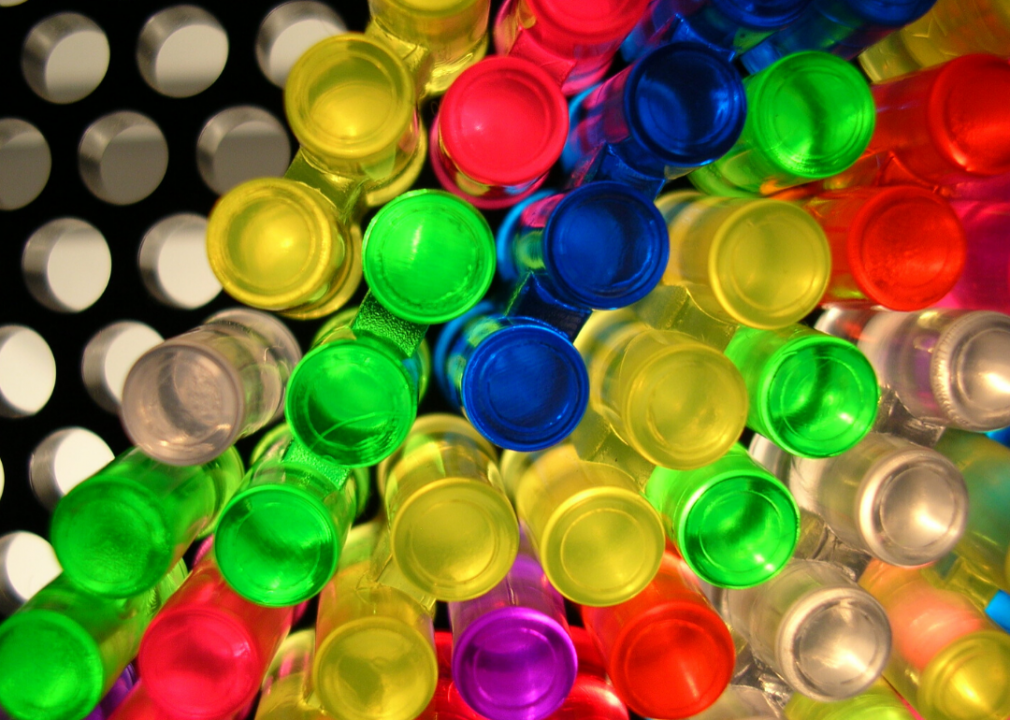
Crystal // Flickr
Lite-Brite Magic Screen
A gridded, 25-watt light bulb box and translucent-colorued plastic pegs had kids creating all kinds of pictures in the ’80s. Illuminated pictures would slowly appear simply by placing the pegs into a panel through pre-patterned or free-form black opaque paper. Though the Hasbro toy manufacturer provided a plethora of refillable pictures with the original toy, it would eventually add My Little Pony, Scooby-Doo, Darth Vader, and Mr. Potato Head sketches.
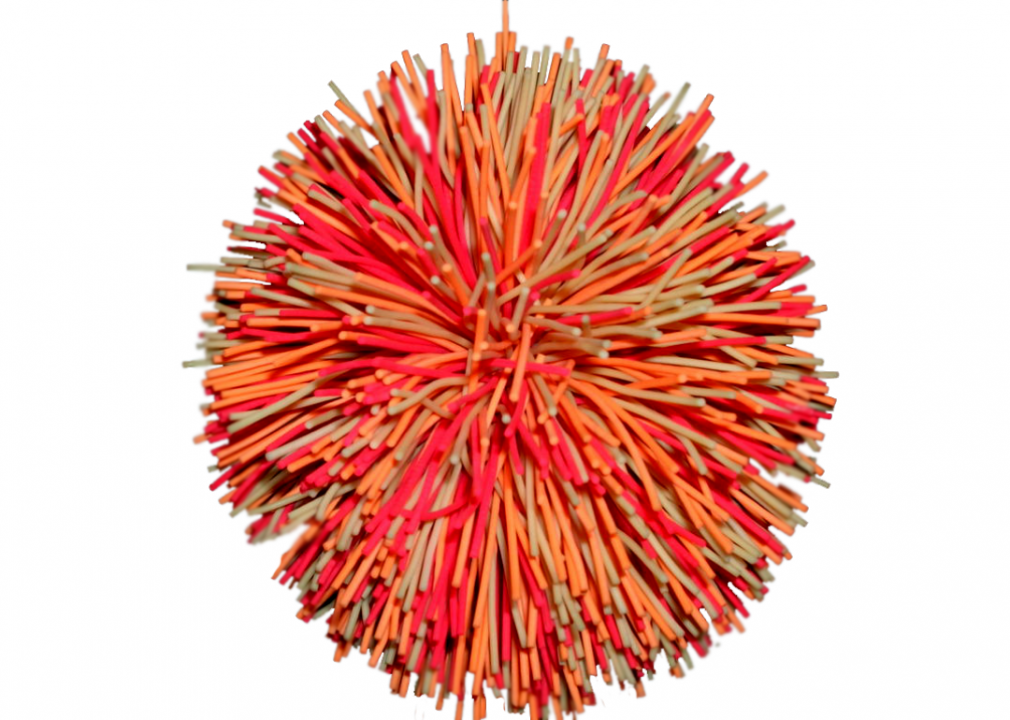
NightMist // Wikimedia Commons
Koosh Ball
The Koosh ball, made up of approximately 2,000 natural rubber filaments, was invented by an engineer who wanted to make playing catch more simple and safe for his children. After only a few years after the 1986 invention, Archie Comics picked up the idea, publishing a short series based on six living Koosh balls. The toy line, which also produced key chains and yo-yos, saw controversy when Supreme Court Justice Ruth Bader Ginsburg was asked to rule on its copyrightability in 1993, and a woman sued after being hit with one on the “Rosie O’Donnell Show” in 2003.
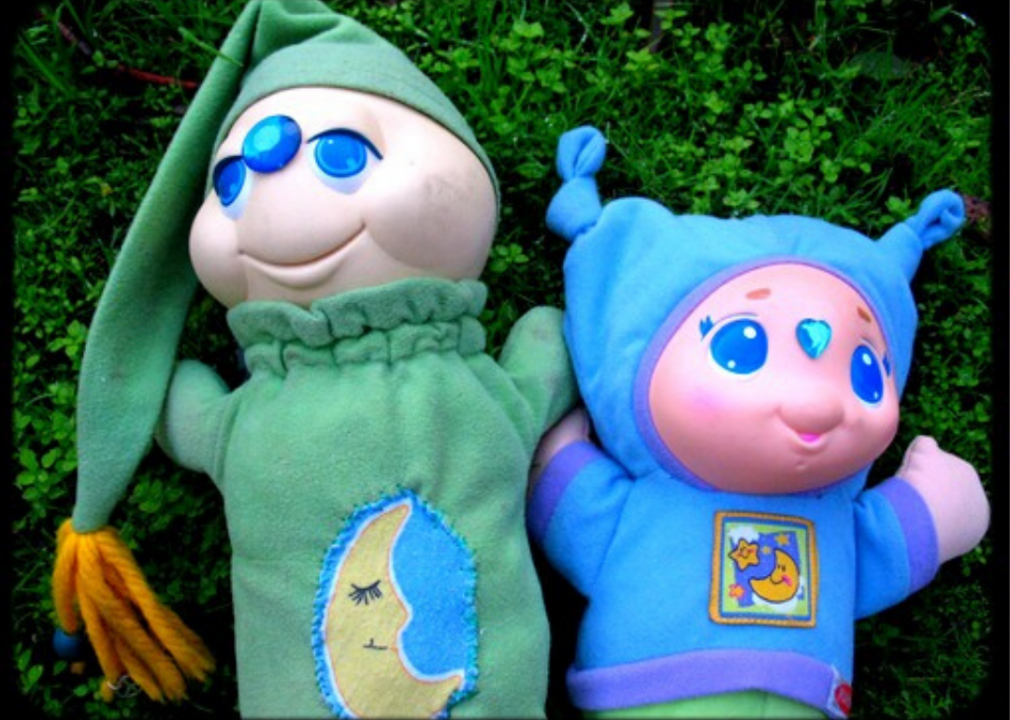
Ariel Grimm // Flickr
Glo Worm
Glo Worms bridged the gap between stuffed animal and night light when Hasbro’s Playskool released the toy in 1982. A soft squeeze would light up the toy’s vinyl head, gaining so much popularity that Hasbro released Musical Glo Worm in 1983, which could play a lullaby or tell a bedtime story. “They’re all your goodnight friends” was the catchy jingle that played over commercials of little girls and boys getting ready for bed with their Glo Worms hugged tightly.
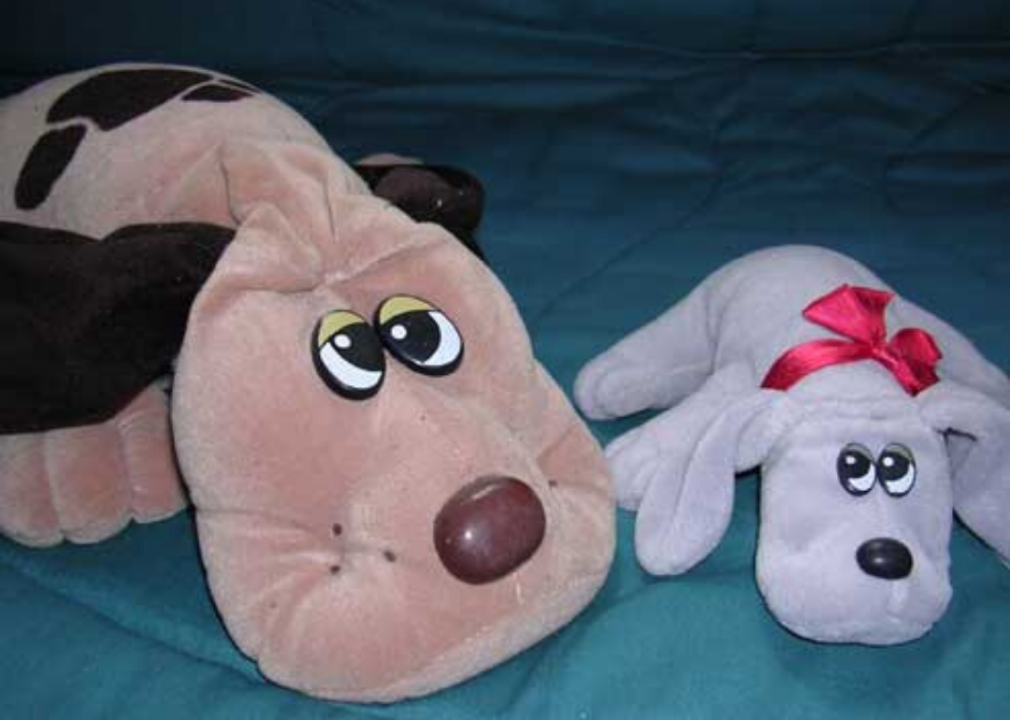
Babbletrish // Flickr
Pound Puppies
Pound Puppies were the perfect compromise between children begging for a family dog and parents that didn’t want to pick up after a dog. They came in a cardboard rescue crate for “adoption,” with adorable eyes and big floppy ears for $30 (and an additional $3.50 for name tag). Inventor Mike Bowling, who showed the product to 14 companies before one bit, estimated in 2016 that there were three times as many Pound Puppies in the U.S. than actual dogs.
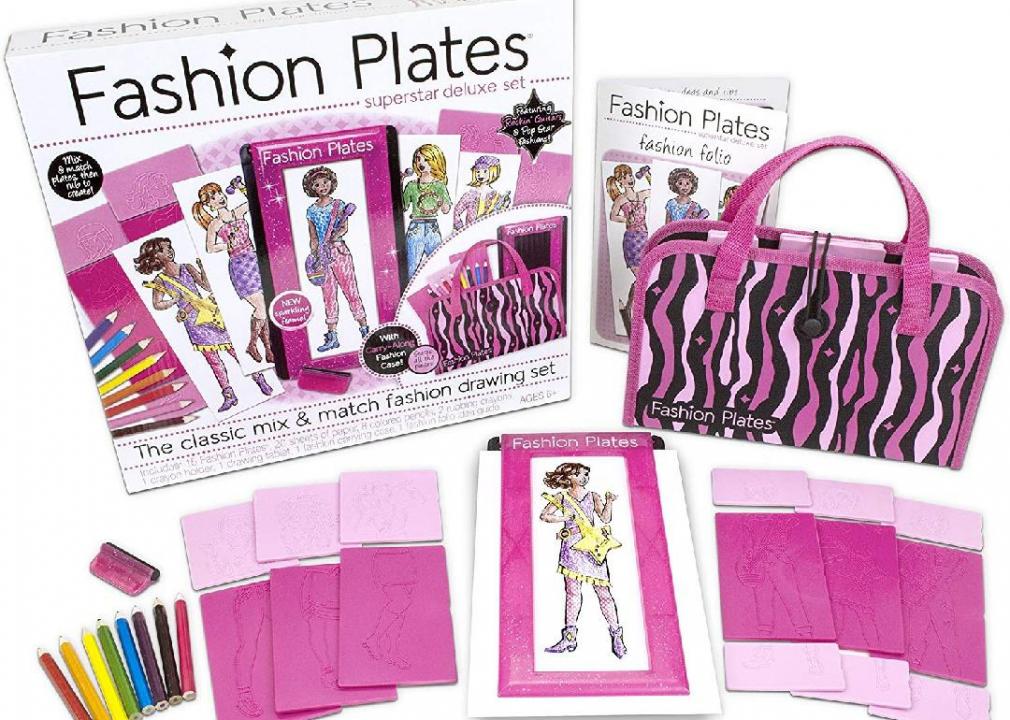
Kahootz
Fashion Plates
The concept of Fashion Plates has existed since the 18th century, but the toy version released by Tomy Toys in 1977 really caught on in the 1980s. Young girls could easily play fashion designer by snapping a wide array of outfit pieces into a base, and using a black crayon to trace the outline onto a piece of paper. Coloured pencils and fabric patterns were then used to bring life to Fashion Plates, which were resurrected in 2014 by the toy company Kahootz.
[Pictured: Kahootz Fashion Plates for sale on Amazon in 2019.]

Big Time Toys
Moon Shoes
Safety didn’t always come first with Moon Shoes, a set of mini-sized trampolines that strapped to kids’ feet with Velcro straps. The 1980s plastic version, which led to a number of injured ankles, was a vast improvement over the metal ones released in the ’50s. While the danger didn’t deter kids from bouncing around the neighbourhood, Nickelodeon made safety updates for a resurgence in the ’90s.
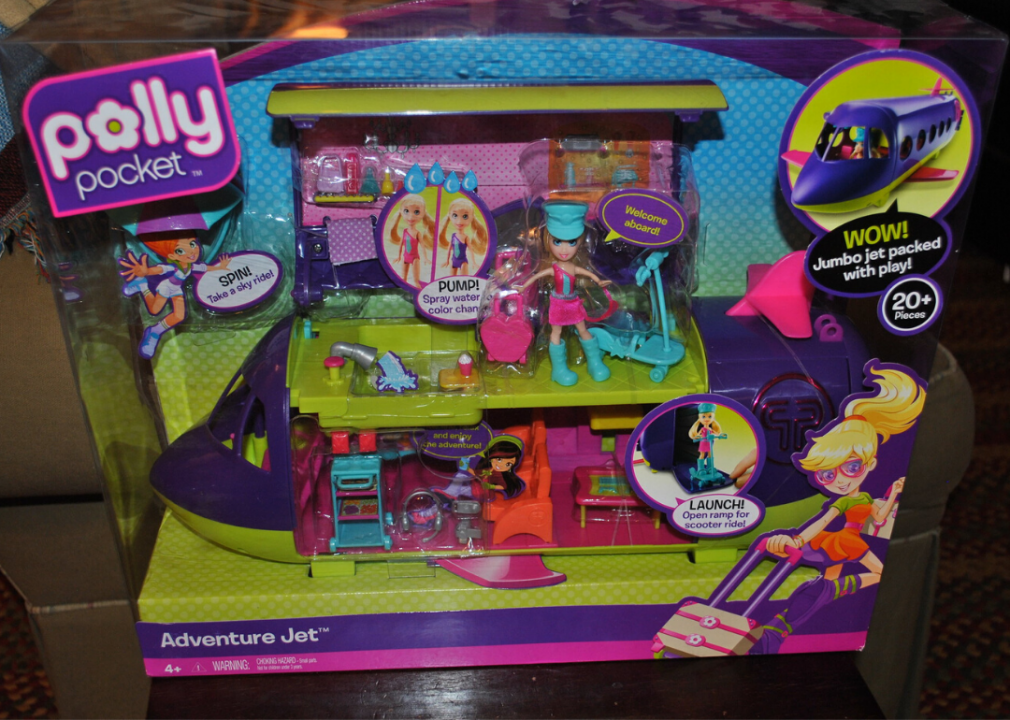
Chuck Redden // Flickr
Polly Pocket
Polly Pockets, which premiered in 1989, were a staple for young kids who could mix and match the tiny dolls with many tiny accessories. Created in 1983 by Chris Wiggs for his daughter, his original set used a powder compact as a tiny house. Polly Pockets were licensed by Mattel in the 1990s before the company bought Bluebird Toys in 1998. Polly got a new life after returning from a three-year hiatus in 2018.
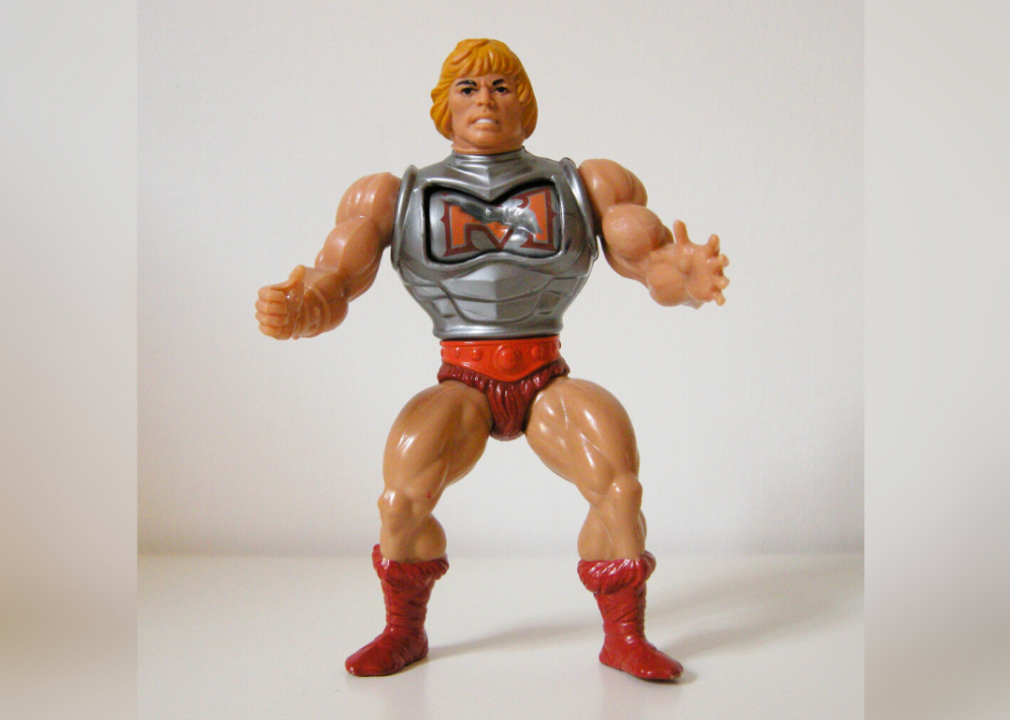
Deborah Swain // Flickr
Masters of the Universe
By the power of Grayskull, He-Man and the Masters of the Universe action figures were on many Christmas lists when Mattel debuted the line in 1982. Following the exploits of He-Man and his fight against Skeletor, Masters of the Universe’s 70 original action figures spawned comic books, television shows, movies, a She-Ra spin-off, and eight video games. Mattel answered calls from fans of the ’80s hit and released a new Masters of the Universe Origins collection, beginning in 2020 with He-Man and Skeletor.
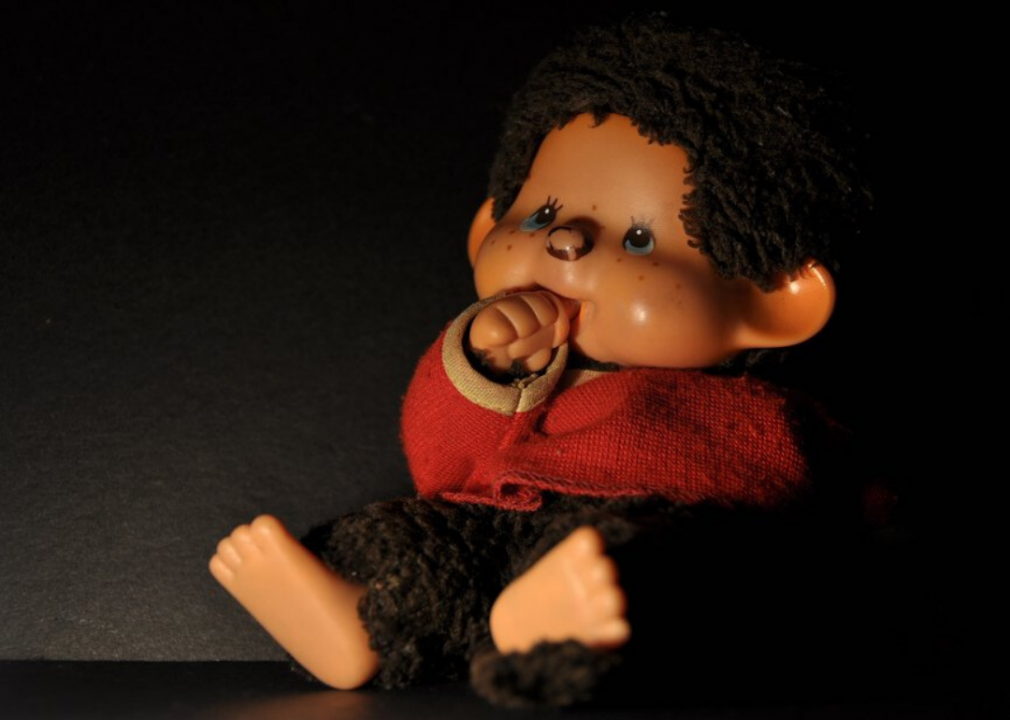
keben-k // Flickr
Monchhichi
The catchy jingle that went along with Monchhichi helped draw kids to these stuffed monkey toys. The Japanese company Sekiguchi released the doll, which could suck its thumb, in 1974, and it reached the U.S. in 1980 under a licensing deal with Mattel. The dolls spawned a Saturday morning cartoon series from Hanna-Barbera in 1983, before the fad began to wear off and Mattel dropped the line in 1985, which Sekiguchi rereleased in 2004.
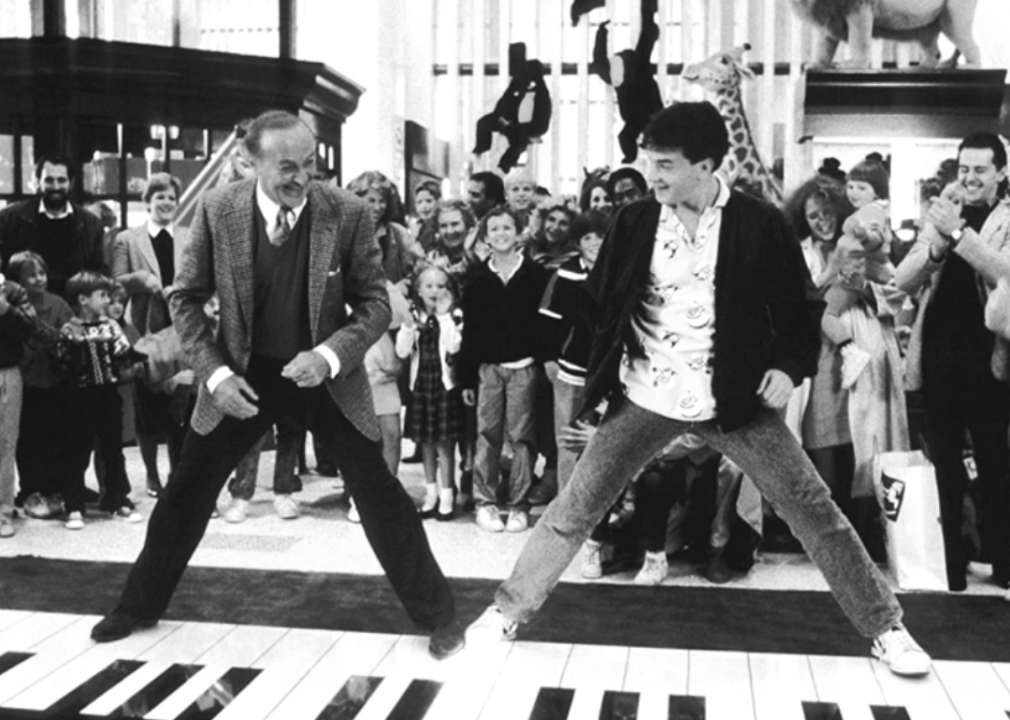
Twentieth Century Fox
Piano Dance Mat
Tom Hanks and Robert Loggia can almost entirely take credit for the Piano Dance Mat craze of the late 1980s. The Piano Dance Mat, which played a different tone as the user walked along a series of keys, was a display item inside massive New York toy store FAO Schwarz, beginning in 1982. Struggling to stay afloat, the store offered its space to Hollywood, with Hanks and Loggia making movie history by playing “Chopsticks” on a larger version of the toy in the 1988 hit movie “Big.”
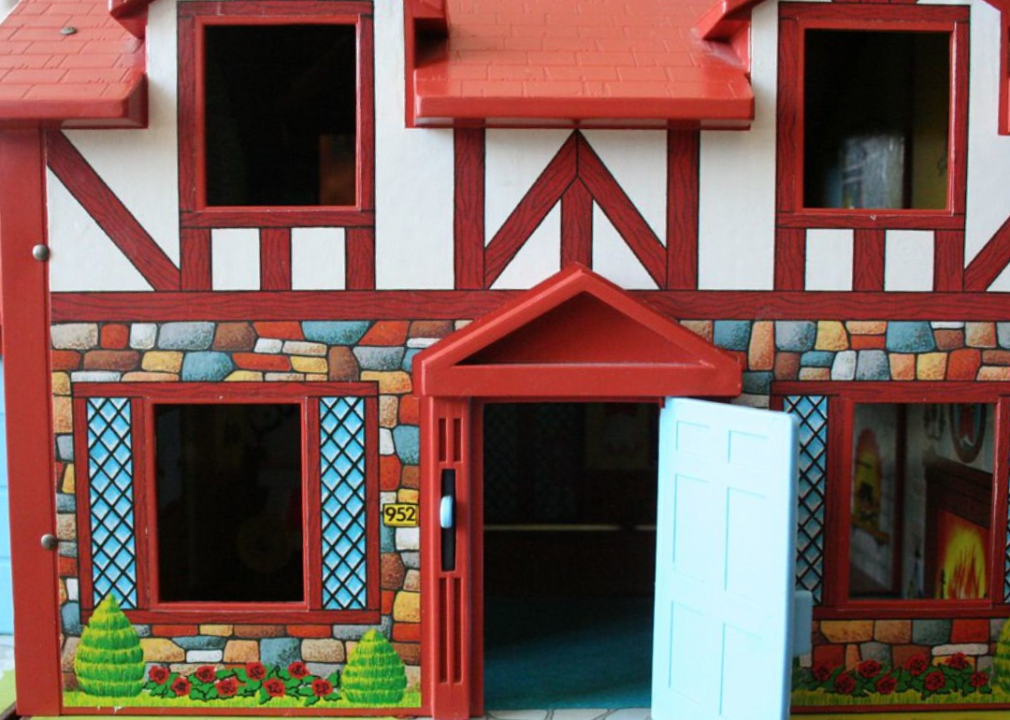
Ghislaine // Flickr
Little People Family House
Fisher-Price’s Little People line stretches back more than 50 years with multiple different playsets, but the Family House was a staple of 1980s toy boxes. The four windows and door gave a glimpse into the lives of the Little People, while the House opened in the middle so kids could move them throughout the house. It doubled as a carrying case, meaning kids could cram their Little People inside and take them anywhere.
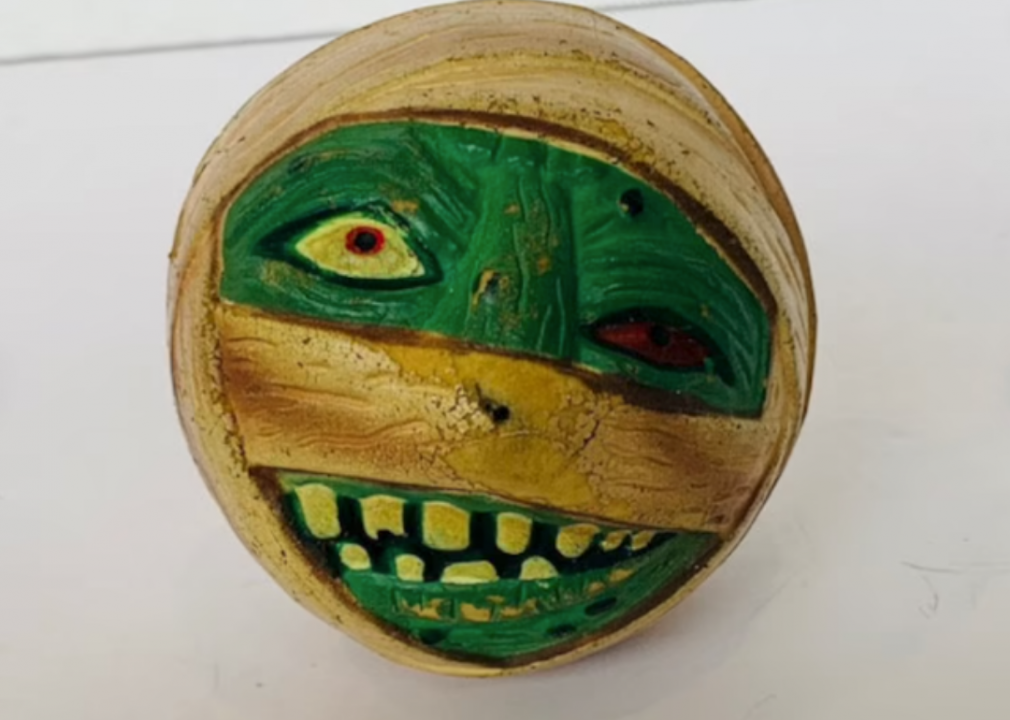
AmToy
Madballs
These gross-looking rubber balls were an attempt by AmToy in 1985 to find a product for boys, after finding hits with Care Bears and Holly Hobbie for girls. Madballs’ detailed designs and names like Screamin’ Meemie and Horn Head made them a must-have for young boys. The hard rubber was quickly replaced with a softer version after boys started throwing them at one another. Nostalgic fans can still find Madballs today, with new collections from multiple different companies.
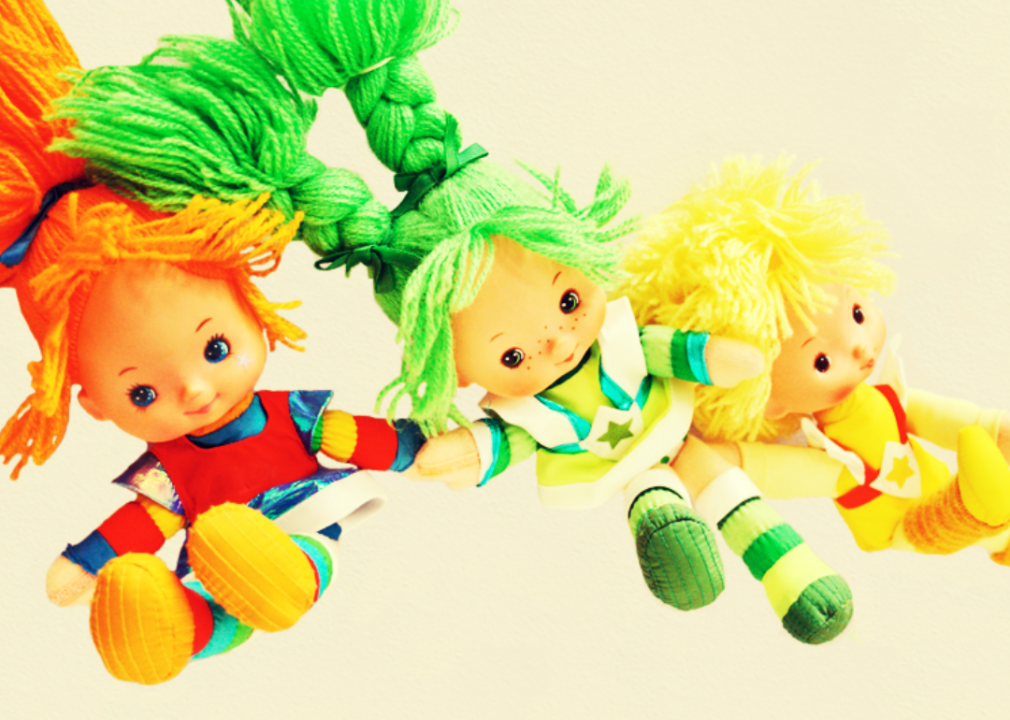
Ani-Bee // Flickr
Rainbow Brite
Hallmark Cards introduced Rainbow Brite—who brought happiness and colour wherever she went—as an animated series in 1984. Mattel took the reigns for merchandising, and the Rainbow Brite dolls, with their vibrant hair, along with her trusted steed Starlite, became must-have toys for young girls. Rainbow Brite was Mattel’s most successful product to that point, spawning multiple movies, books, TV shows, and more, with a marketing budget of $35 million in 1985.
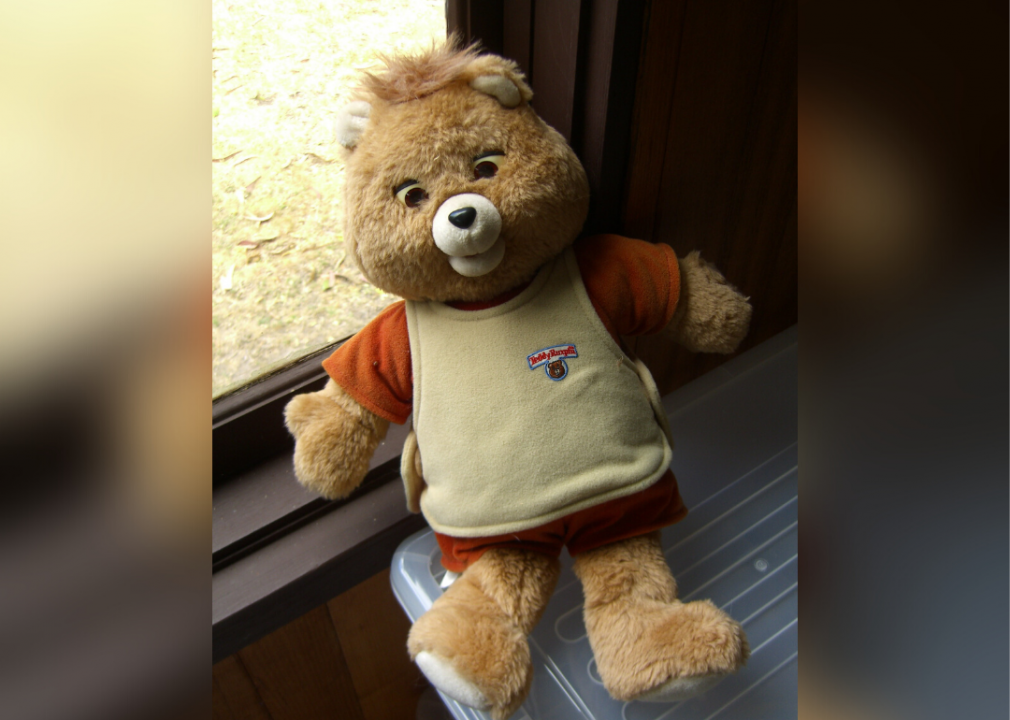
Wade Tregaskis // Flickr
Teddy Ruxpin
Teddy Ruxpin captured the attention of boys and girls everywhere, as his ability to talk and move both his eyes and mouth were revolutionary at the time. Teddy would read stories to kids thanks to a cassette tape inserted in his back and was so popular, Worlds of Wonder had to charter jets from China, Hong Kong, and Taiwan stuffed with Teddy Ruxpins to try to meet demand. While the original Teddy Ruxpin is a collector’s item, newer versions with LCD eyes and a slew of new stories to tell would hit the shelves in 2017.
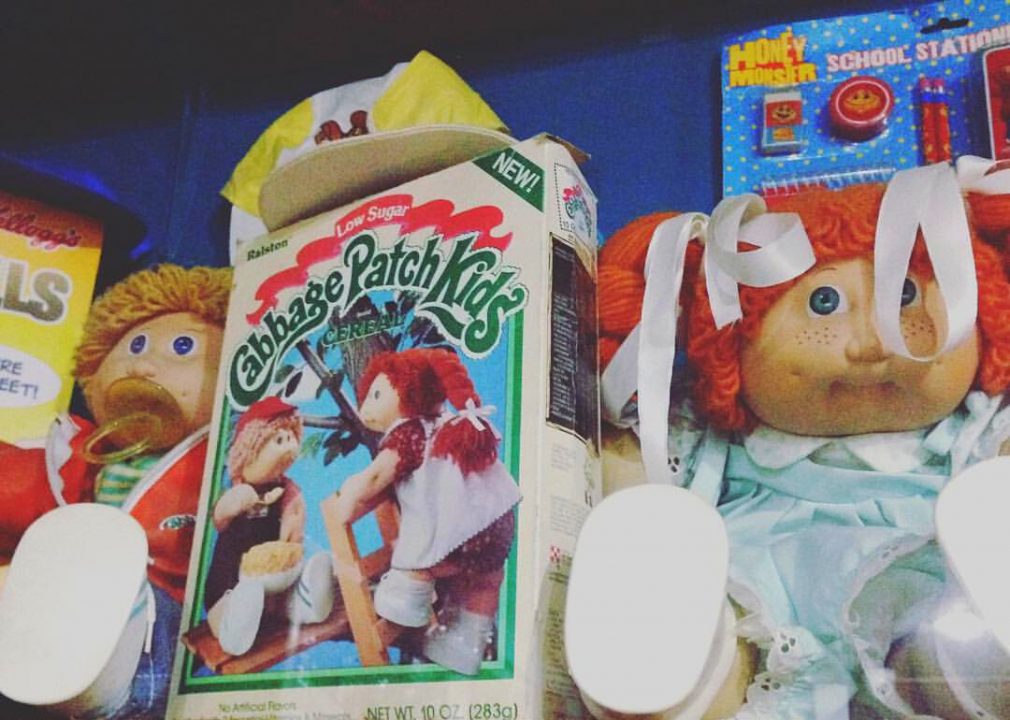
Louise McLaren // Flickr
Cabbage Patch Kids Doll
Cabbage Patch Kids dolls were one of the most popular toys in the 1980s, generating nearly $2 billion in sales during the decade. The huggable dolls, of which no two were alike, came with a birth certificate, and were so sought after that consumers rioted across the country when supplies ran out before Christmas in 1983. The original Cabbage Patch Kids dolls weren’t made for consumers, but were the creation of Kentucky artist Martha Nelson Thomas, who would adopt them out to her friends, before her idea was stolen.
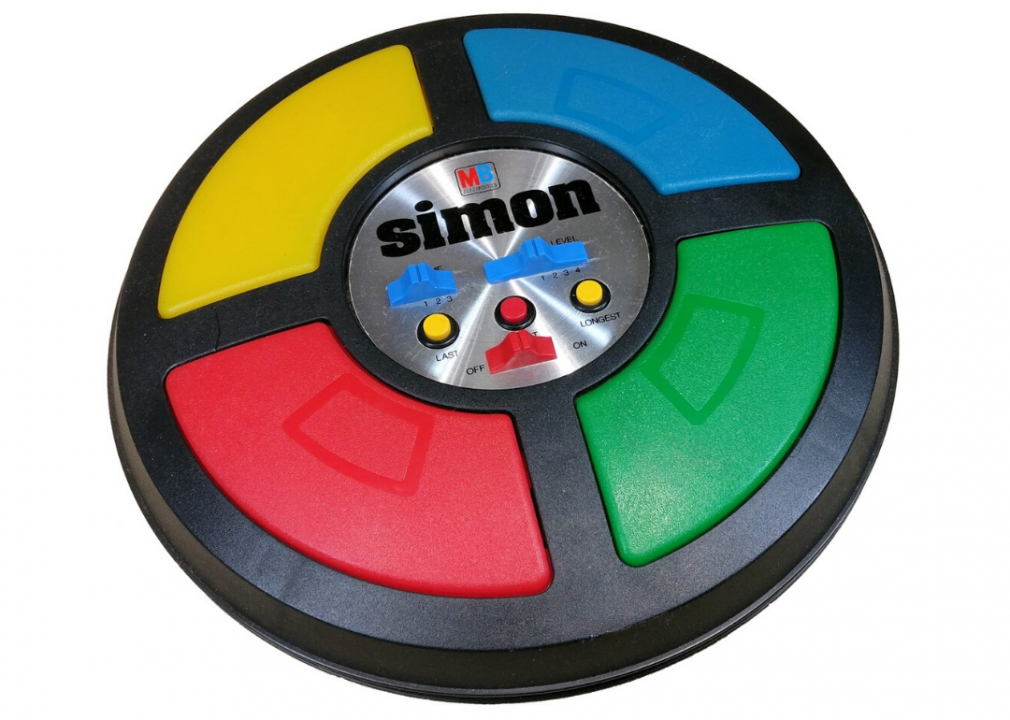
Shritwod // Wikimedia Commons
Simon
Milton Bradley inspired a phenomenon when it launched the deceptively simple Simon console at New York’s Studio 54 in 1978. Simon, which sold for the equivalent of $96, was designed as both a single- and multi-player memory game that required users to press four colored buttons while repeating an increasingly longer sequence of lights and sounds. The simplicity of the original Simon inspired multiple generations of the game, including the Simon Optix, a wearable headset that flashes lights before the user’s eyes.
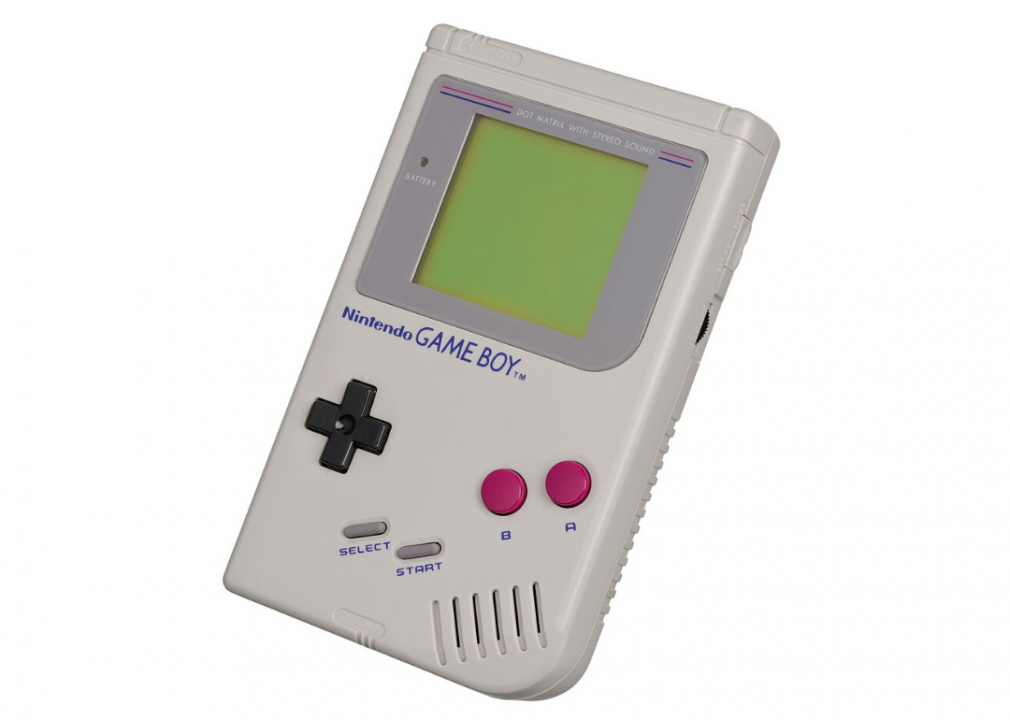
Evan-Amos // Wikimedia Commons
Game Boy
The Game Boy was Nintendo’s second venture into handheld video gaming, and it found immediate success by selling over 1 million units within weeks of its 1989 release. The small gaming system, which came packaged with the wildly popular Tetris, combined elements from Nintendo’s NES gaming console and the Game and Watch, the original 1980 handheld from the Japanese company. Although it was less advanced than competitors from Sega and Atari, the 30 hours of battery life started a craze that has sold over 110 million units.
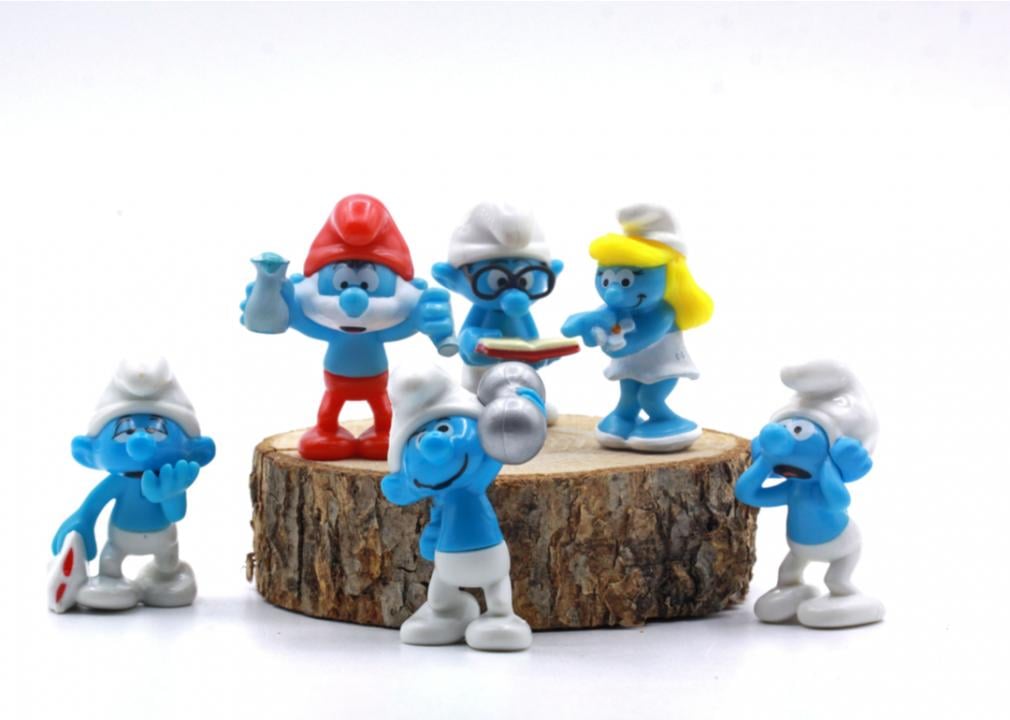
Shafostock // Shutterstock
Smurfs
It was almost impossible to ignore the Smurfs in the 1980s, as what began as a 1960s Belgian comic evolved into action figures, a popular television show, video games, countless stuffed animals, and even a macabre UNICEF commercial. There were dozens and dozens of action figures to collect, from Papa Smurf to the Smurfs’ peace-loving nemesis, Gargamel, some of which can fetch over $100 today. Two major motion pictures in the past decade have helped bring a resurgence for the Smurfs, while steady interest in Belgium has helped lead to over 400 figurines in the collection.
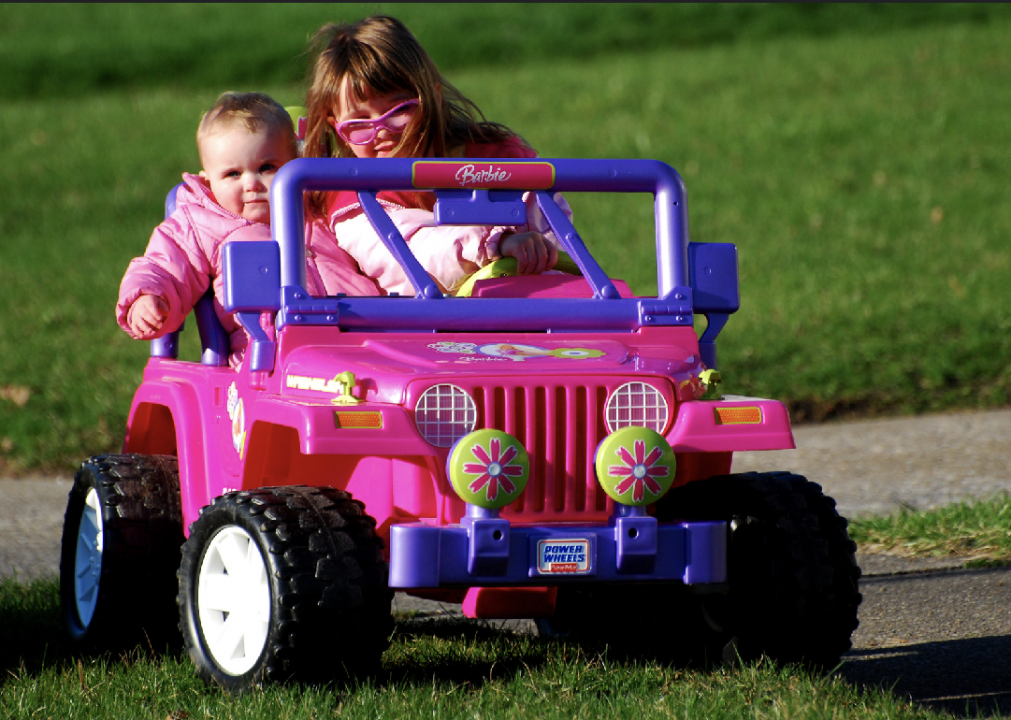
Rona Proudfoot // Flickr
Power Wheels
Kids of all ages got the sensation of driving around the neighbourhood just like their parents—albeit at around five miles per hour—when Pines of America brought Power Wheels to the masses in the early 1980s. Kids could choose from an All-Terrain Vehicle, a monster truck, or a convertible before the first of many Jeep models debuted in 1986. Over 100 other models have hit the market since, and the impact of these battery-powered marvels is alive today with events like Extreme Barbie Jeep Racing, and the twice-annual Rednecks with Paychecks Downhill event putting the hard plastic shell to the test.
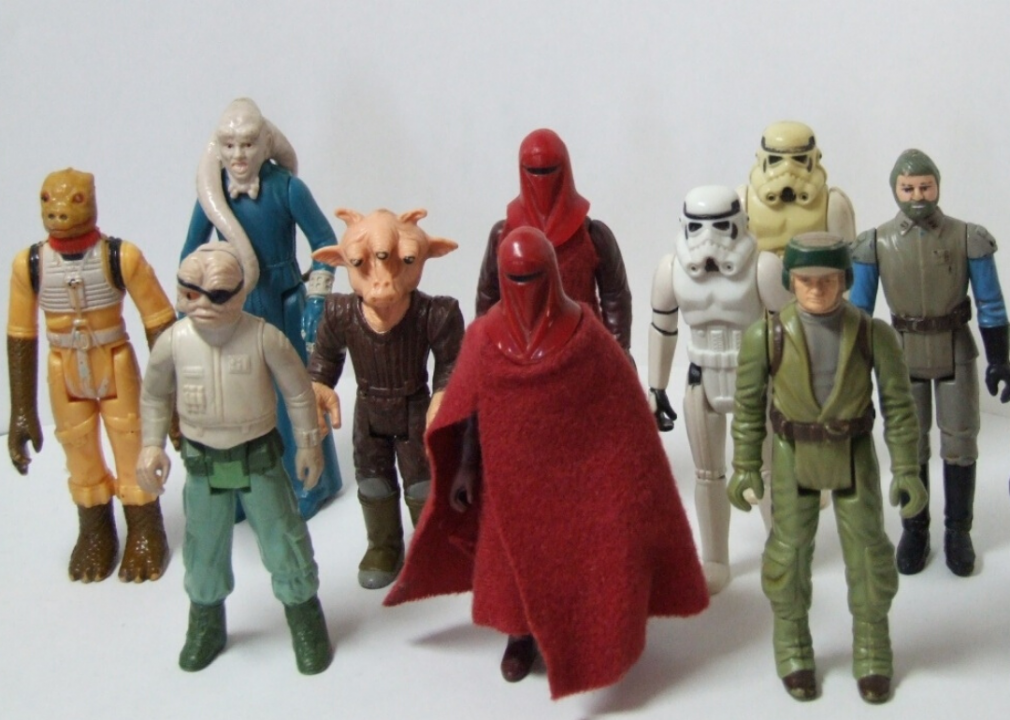
Richard Lewis // Flickr
Star Wars Figurines
Kenner released the first “Star Wars” figures in 1978: Luke Skywalker, Princess Leia, Chewbacca, and R2D2. They continued to release figures until 1985, and it wasn’t until 10 years later that new figures were released when Hasbro began to manufacture the toy series. The demand for vintage “Star Wars” figures hasn’t faltered much: In 2017, a rare “Star Wars” Jawa action figure sold for £21,600 (equivalent to $28,000). And in the 1980s prototype for Bib Fortuna (from “Return of the Jedi”) was purchased for £36,000 (equivalent to more than $46,000) in 2019.

